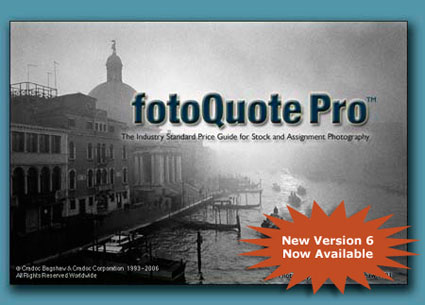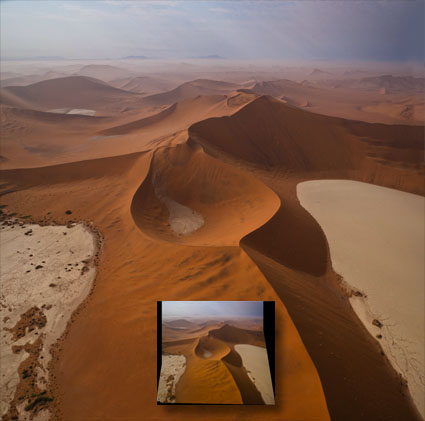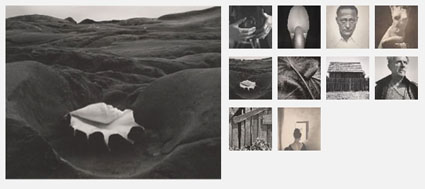Sarah Moon
Sara Moon provides insights into her creative life.
Find more videos on photographers here.
Read over 40 conversations with photographers here.
Sara Moon provides insights into her creative life.
Find more videos on photographers here.
Read over 40 conversations with photographers here.
Steve McCurry provides insights into his creative process.
Learn more about Steve McCurry here.
Find more videos on photographers here.
Read over 40 conversations with photographers here.
My TEDx Dirigo talk from 10/10/10 is live.
In You’re More Creative Than You Think You Are I show how you can create a synergy between skills you already have (writing, drawing, photography) to turbo charge your creativity.
Watch the other TEDx Dirigo speakers here.
Learn more about TEDx Dirigo here.
Find more of my favorite TED videos here.

Looking for information on how to price licensing and assignment work?
PhotoQuote Pro is the software I use.
“When someone wants to use one of your photos, you don’t need a number pulled out of a hat, you need help to get paid fairly for your work. You need fotoQuote, the industry standard photo pricing guide for stock and assignment photography.
FotoQuote is the only source of photo pricing information for photographers that includes powerful coaching help for every category. FotoQuote not only helps you come up with a fair price for your image license, but it also gives you the negotiation information you need to help you close the sale.
FotoQuote Pro 6 has just been released and it’s our biggest upgrade in the almost twenty years since the original version of our photo pricing calculator was written. We’ve added 86 new categories bringing the total to 304. The new version now includes both still and video stock footage categories, assignment pricing, thumbnails, international currency and much more.”
Learn more about PhotoQuote here.
Find more business resources here.
Learn more in my Digital Printing and Pro Portfolio workshops.
Vivian Maier was recently discovered posthumously. The Chicago nanny took over 100,000 photographs and some say she may rank among the top street photographers of the 20th century.
Find more videos on photographers here.

“Collectors are willing to pay steep prices for the world’s finest photography books. Rare editions from the likes of Robert Frank, Hennri Cartier_Beesson, Irving Penn, and Ansel Adams are among the most sought-after of all art books. Sometimes these books have captured an era or a location, sometimes they have helped to coin an artistic trend, sometimes they are simply the finest work of a particular photographer.”
Richard Davies comments on the 10 most collectible photo books and 5 more.
Find my recommended photography books here.

As visual communicators, we’re responsible for everything that’s in the frame; we’re also responsible for everything that’s not in the frame. Deciding what’s in the frame and what’s out is a critical decision that can make or break an image. Here are two essential framing strategies.
1.?Use the frame to eliminate distracting information around a subject.
Take extra care with image information that touches the frame, as it will draw extra attention. Do this with significant compositional elements.
2.?Eliminate space around a subject to focus a viewer’s attention.
A lot of space between the subject and the frame can be used to call on psychological associations with space, such as freedom or isolation. Some space between the subject and the frame can give the appearance of the subject resting gracefully within the frame. Touching the subject with the frame strongly focuses the attention of the viewer and may seem claustrophobic. Cropping the subject with the frame can focus the attention of the viewer on specific aspects of the subject and/or give an image a tense quality, evoking evasion and incompleteness—this often seems accidental if less than half the subject is revealed.
There’s more than one way to apply these strategies. While cropping techniques are simple to practice, the reasons for their application and the choices made about how to apply them, as well as the final effects, may be exceptionally complex. You have two choices ..
1. Reposition the frame before exposure.
2. Contract the position of the borders of an image after exposure
If you plan to retouch, you’ll frame and crop differently …
Read more at Digital Photo Pro.
Find more digital photography techniques here.
Learn more in my digital photography worskhops.

In the 1930s, a small group of California photographers challenged the painterly, soft-focus Pictorialist style of the day. They argued that photography could only advance as an art if its practitioners exploited characteristics inherent to the camera’s mechanical nature. This small association of innovators created Group f/64, named after the camera aperture which produces great depth of field and sharp focus. The exhibition revisits this debate and includes images by photographers in Group f/64 such as Ansel Adams, Edward Weston, Imogen Cunningham, Sonya Noskowiak, and Willard Van Dyke, as well as images by such Pictorialists such as Anne Brigman, William Dassonville, Johan Hagemeyer, William Mortensen, and Karl Struss. With 90 works by 16 artists, Debating Modern Photography offers a feast for the eyes while illustrating both sides of a high-stakes debate. Outstanding examples of the clean edges and bold forms of Group f/64 stand in sharp contrast to the romantic, hand-crafted Pictorialist work that includes elegant portraits, tonalist landscapes, and allegorical studies.
The exhibit is open (Mon-Fri 9-7) through Dec 5.
Learn more at Maine’s Portland Museum of Art.